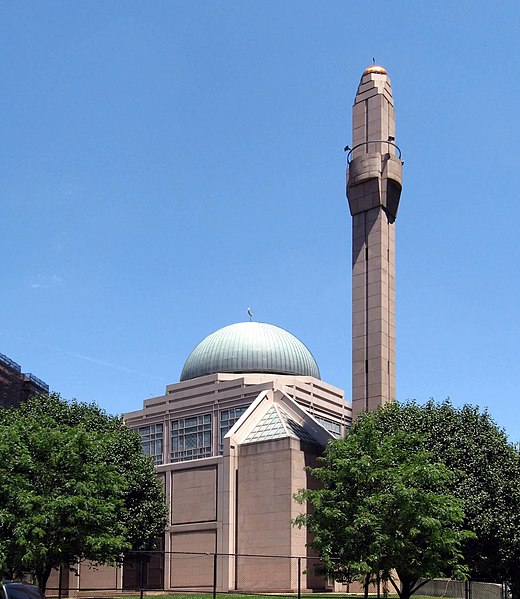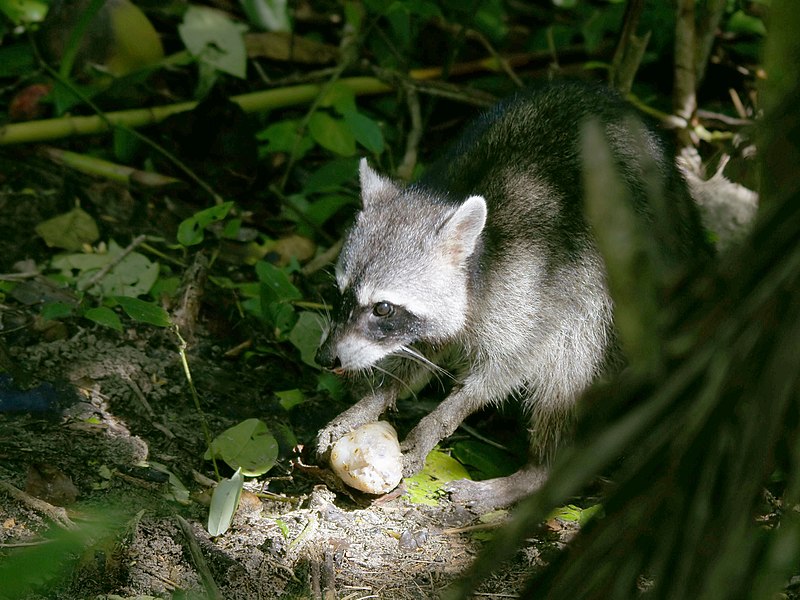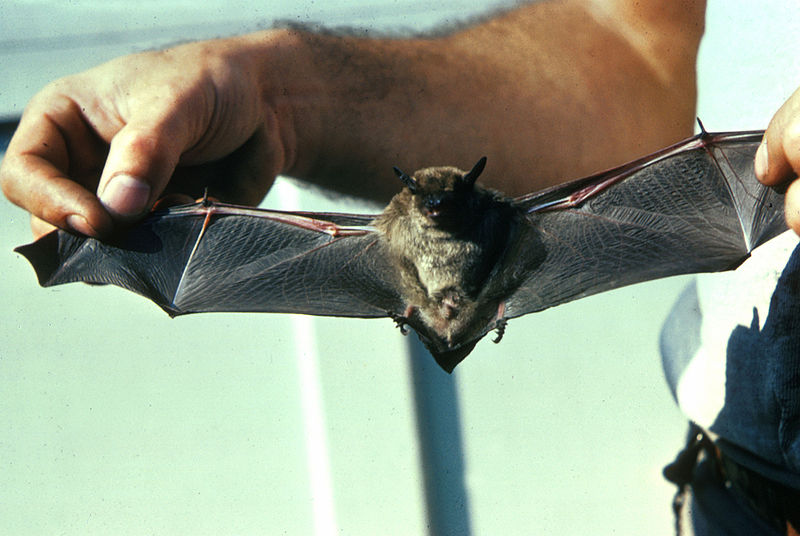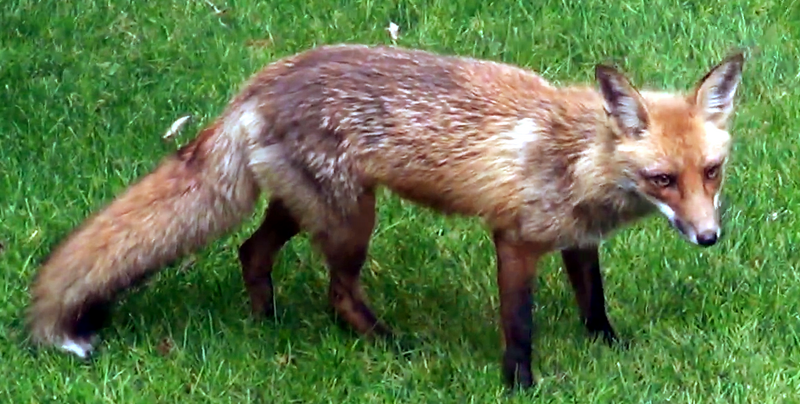“We have here Papists, Mennonites and
Lutherans among the Dutch and also many Puritans or Independents and many
atheists and various other servants of Baal.”
So wrote a Dutch citizen of New Amsterdam to officials in Holland in
1655, complaining of the diversity of religious faiths in the colony. He supported Governor Peter Stuyvesant’s attempt
to impose the Dutch Reformed faith on the colonists, but the population was too
diverse both ethnically and religiously to be made to conform. When the British seized the colony in 1664,
they in turn tried to impose the Anglican faith, but with the same result: the
city simply could not be made to conform.
Right from the start New Amsterdam, and subsequently New York, attracted
such a mix of peoples that a policy of mutual tolerance was practiced, with
occasional attempts at conformity that never had even a ghost of a chance. Many residents were too busy making money to
find time for religion, and those who did find time went their separate
ways.
And since then? As of 1990 – the latest comprehensive figures
I have access to – the city’s places of worship ranged in number from 471
Baptist, 457 Jewish, 403 Roman Catholic, and 391 Pentecostal at the high end,
to 69 Russian Orthodox, 60 Moslem, 40 Greek Orthodox, and finally, at the low
end, 3 Quaker and 1 Baha’i. But in the
quarter century since, those figures have surely changed, perhaps radically,
because, as we shall see, religion in this city is in flux.
Precisely because New York was a place of
many faiths – faiths that might squabble among themselves but that didn’t try
to wipe each other out -- the city
became a place of refuge for the persecuted.
New Amsterdam had been founded in 1624 by a group of Huguenot Walloons
sponsored by the Dutch West India Company.
More Huguenots from the Netherlands and Germany followed, including Peter
Minuit, famous for buying the island of Manhattan from the native peoples. By 1650 Huguenots were about a fifth of the
settlement’s population, and when, in 1685, Louis XIV revoked the Edict of
Nantes, which guaranteed French Protestants certain protections, many more French
Huguenots fled the Sun King’s radiating splendor to find sanctuary in New
York. So welcoming was the city that the
Huguenots assimilated readily; by the eighteenth century, Huguenot merchants
numbered among the city’s leaders, and members
of the Huguenot community gradually became affiliated with other denominations,
especially the Anglican Church. Such is
the price of acceptance: loss of
identity.
 |
| Expulsion of Huguenots from La Rochelle, 1661. World Imaging |
 Peter Stuyvesant may have cast a sour
glance at the Huguenots, but after all, they had long preceded him to New
Amsterdam. But when, in 1654, a group of
23 Sephardic Jews arrived, some of them fleeing the fall of Dutch settlements
in Brazil to the Portuguese, he put his gubernatorial foot down: the “deceitful
race” were barred from buying land or participating in the citizens’ militia,
and were invited to depart. But the
Jews’ leaders, knowing their rights under the laws of the Dutch Republic, which
guaranteed freedom of religion to all, appealed to authorities in Holland, and
Stuyvesant’s superiors reminded him that “each person shall remain free in his
religion.” He was further advised that
certain influential Jews had invested heavily in the Dutch West India Company,
which by itself must have settled the matter: the Governor was told to back
off.
Peter Stuyvesant may have cast a sour
glance at the Huguenots, but after all, they had long preceded him to New
Amsterdam. But when, in 1654, a group of
23 Sephardic Jews arrived, some of them fleeing the fall of Dutch settlements
in Brazil to the Portuguese, he put his gubernatorial foot down: the “deceitful
race” were barred from buying land or participating in the citizens’ militia,
and were invited to depart. But the
Jews’ leaders, knowing their rights under the laws of the Dutch Republic, which
guaranteed freedom of religion to all, appealed to authorities in Holland, and
Stuyvesant’s superiors reminded him that “each person shall remain free in his
religion.” He was further advised that
certain influential Jews had invested heavily in the Dutch West India Company,
which by itself must have settled the matter: the Governor was told to back
off.
But what really ticked Stuyvesant off was
the arrival of English Quakers, likewise fleeing discrimination in their
homeland. Their aggressive sermonizing
and, when moved by the Holy Spirit, their fits of jiggling or quaking (hence their
name), invited his disdain. These
oddballs, he decided, were a threat to the peace and stability of the colony,
and probably crazy as well. When they
persisted despite his disapproval, he forbade the settlement of Vlissingen (today’s
Flushing, in Queens) to allow their worship, whereupon the townsfolk, all
English, signed a remonstrance to the Governor reminding him that Dutch
tolerance extended even to Jews, Turks, and Egyptians, in consequence of which
they must respectfully refuse to obey.
This Flushing Remonstrance of 1657 is now celebrated as a forerunner of
the First Amendment of the Bill of Rights, but Stuyvesant, not being conversant
with said Bill, arrested four of the remonstrating townsfolk and clapped two of
them in jail for a month. Only the
coming of the British in 1664 ended his antics of intolerance.
So much for religious diversity in New
Amsterdam; it was there from the start, though not without fitful
challenges. Now let’s fast-forward to
the twenty-first century and a vast metropolis that has been fed over the
centuries by wave after wave of immigrants.
What kind of religions are here today?
Using the terms loosely, at first glance I’m tempted to divide New York religion into three categories: High Church, Low Church, and No Church, meaning
the more formal and traditional, the more informal and upstarty, and the Great
Unwashed.
The people I have socialized and worked
with in Manhattan are white middle-class professionals – writers, directors,
editors, artists, bank employees, teachers, librarians, chefs, and attorneys –
who for the most part fall into the category of No Church, or the Great
Unwashed. Some of these No Churchers may
never have been touched by religion, but most have fallen away, gently or not
so gently, from the faith of their childhood.
To really know them, you need to know where they’ve come from
religiously, culturally, and geographically.
Being No Churchers, they’re the ones who, no doubt, create the
impression that New York is a secular city devoid of religion – a place, in
fact, where people go to lose their religion, if they ever had any in the first
place.
My friend Ed was raised a traditional Roman
Catholic in Denver, where he served as an altar boy, and then attended a Jesuit university. When he first came to New York he was an
observant Catholic who attended Mass and dutifully went to confession. But then, as the years passed, he became less
dutiful, began questioning his faith, and finally fell away completely, even to
the point of denigrating it with, I’m sure, no small amount of bitterness. If Catholicism left its mark upon him, it was
visible, I think, in his courteous, soft-spoken manner, very reserved; he was
not one to give himself emotionally, to yield to impulse. Which reminds me of a French friend whom I
knew at Lyons when I was studying in France ; he had attended a Catholic collège, rather than the secular
secondary school, the lycée, and
showed the same well-mannered, soft-spoken reserve. We can leave our childhood faith, but it
won’t necessarily leave us.
My friend John, who is proud of his
Finnish descent, was raised a Laestadian Lutheran in Minneapolis and was taken
by his mother to a church where the service was in Finnish, of which he
understood barely a word. He describes
Laestadianism as a freakish, fundamentalist branch of Lutheranism that
flourished in northern Minnesota. Its
aversion to sin and worldliness went so far as to consider going to movies a
sin, as well as alcohol consumption, dancing, and women wearing makeup. When he attended the University of Minnesota,
where he majored in English and philosophy, he lost his faith, and upon coming
to New York he became a full-fledged atheist and remains one to this day. Religion for him is simply a distant and
unpleasant memory from his childhood, something he can do quite easily
without. But unlike Ed, he feels no
biting resentment, no bitterness.
As for me, as a child in Evanston I was exposed
to a gentle Methodism, quite liberal, that imposed no catechism or ideology, no
ban on movies or dancing, but instead inculcated a few basic concepts of
morality, the need for understanding and compassion, as exemplified by the
story of Jesus, retold every Easter by a talk with slides, and celebrated every
Christmas with a well-attended Nativity pageant, superbly dramatic, in which
the whole church participated. Even
yours truly was involved, musical illiterate though I was, white-garbed and holding
my electric candle high, as the triumphant strains of Handel’s Hallelujah
Chorus brought the whole attendance to their feet, and the high-school and adult
choirs marched down the aisles singing lustily, till our resounding hallelujahs
climaxed and closed the performance with
a whopping big musical bang.
Because the Methodism I had known was, as
I put it, gentle, even in my later – and inevitable – lapsed state, where I
felt no immediate need of religion, I nursed no resentment, no bitterness, only
warm memories of the Methodists I had known, their principles, their winning
love, their faith. At times I ask myself
if I have ever encountered anyone who impressed me as being truly spiritual,
and always I recall my junior-year Sunday School teacher, Dr. Edmund D. Soper, white-haired
and spectacled, soft-voiced, a teacher and scholar with a mellow wisdom. What it was about him that was spiritual I
cannot define or describe; it was simply an intangible aura that you
sensed. My partner Bob says the same of
his mother’s Lutheran pastor in Jersey City, a truly spiritual man such as one
rarely encounters today, or perhaps ever.
Only on one other occasion have I personally
encountered a truly spiritual human being.
While working in the library of the University of San Francisco, a Jesuit school, I heard a talk by Father Martin D’Arcy, the
celebrated English Jesuit, a quirky little black-robed man, sharp-featured and
ascetic, with a bright eye, a mischievous smile, and a superb sense of humor,
and there again I sensed true spirituality.
Not in the other priests whom I encountered there – some smooth and
clever, some prickly and caustic, some diligent and businesslike – but only in
him. His quirkiness was far removed from
Dr. Soper’s mellowness, yet they both conveyed spirituality. A rare quality that even the No Churchers
have to esteem. If it were less rare,
maybe there would be fewer No Churchers.
Maybe. And maybe not.
Even if I’m not myself a believer, I
respect those who are. Whenever I’m in
the Union Square subway station – a huge labyrinth of passageways giving access
to any number of subway lines – I give a smile and a friendly wave to the
women, often black or Latino, who have a table there with literature and invite people to learn
what the Bible really says. They look so
committed, and so ignored by the hurrying commuters, that I can’t resist this
gesture, which always provokes a warm smile and a friendly wave back. Maybe someday I’ll stop and tell them that I
still have the Bible I was given by my mother at age sixteen, a bit decrepit
but still usable. (The Bible, not my
mother.)
But things aren’t always so simple. When, some years back, I renewed contact by
mail with a woman I had dated in junior high and high school, we exchanged
several letters and seemed to be beginning a warm and cordial
relationship. Living now in Nashville,
she told me she attended a Bible-based church and some years ago had
experienced a Damascus Road experience similar to that of the apostle
Paul. Interested, I asked her to relate
it, and finally she did, telling how she had fallen into the blackest of
depressions and, desperate, finally surrendered herself to God, following which
her depression lifted and she felt a joy like she had never known before.
 |
| Conversion of Paul on the road to Damascus, a painting by Hans Speckaert, 1570s. Never was a conversion more dramatic or more crowded; no room for quiet contemplation here. |
This account fascinated me then and still
does now; not for anything would I dismiss lightly or demean in any way what is
obviously the most important event in her life.
So far, so good. But after that
she urged me to give up being gay – as if it were something you could turn on
and off at will – and finally she put the question, “What do you do about
Jesus?” I replied honestly, “I leave him
alone and he leaves me alone. This way
we get along fine.” Which ended the
relationship; no more letters, nothing, kaput.
I truly regret it, but I’m leery of a faith that cuts you off from
others; I know several Catholics who share their faith but don’t try to
convert me, and we all have a rewarding relationship.
So much for the No Churchers. So what about the High and Low
Churchers? In supposedly godless New
York they’re all over the place. For
instance:
In a former vaudeville theater in the
Corona neighborhood of Queens, some six hundred worshipers leap to their feet
to join a Latino band in song, shaking their tambourines. Then a preacher gives a fiery sermon and
speaks in tongues, and parishioners with tear-streaked faces raise their arms
heavenward, eyes shut, in collective rapture.
Nothing quiet or meditative here.
It is noisy, it is public, it is passionate. And it is definitely Low Church.
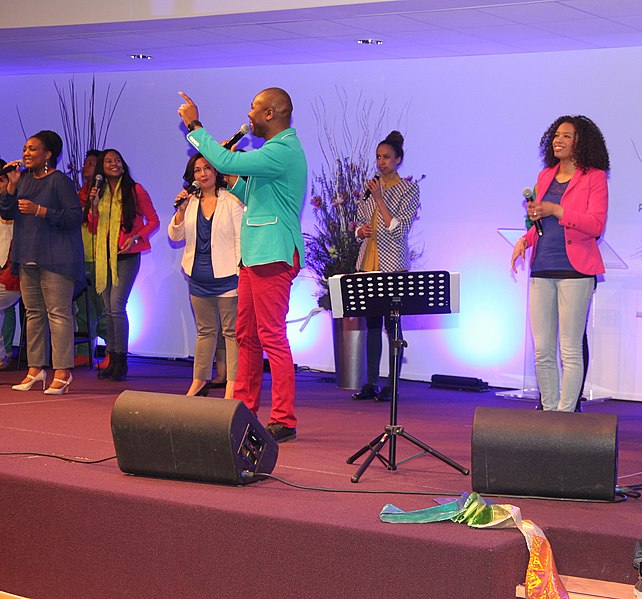 |
| A Pentecostal service. Peter van der Sluijs |
But what is it? It’s the Sunday morning service of the
Pentecostal megachurch Aliento de Vida (Breath of Life), founded twelve years
ago by the pastor, Victor Tiburcio, and his wife, immigrants from the Dominican
Republic. Who are the worshipers? Immigrants from Ecuador and Argentina and El
Salvador and Trinidad and Tobago and just about any country in Latin America,
some of them legal and some not: ordinary people from the bottom of the social
heap who want passion in their services, as well as help in learning English
and navigating the complexities, legal and otherwise, of realizing the American
dream. So great is the demand for Aliento
de Vida’s services, simulcasts are offered by the church’s own TV network.
But this is nothing, compared to the
Pentecostal festival in Central Park on July 11 featuring Luis Palau, the
“Hispanic Billy Graham,” one of the world’s leading evangelical Christian
figures, a gathering that drew 60,000 worshipers – the limit allowed on the
Great Lawn -- for the largest evangelical Christian gathering in the city since
Billy Graham’s crusade in Queens in 2005.
Of the 1700 churches participating, 900 were Hispanic, reflecting the
surging growth of immigrant-led churches in the boroughs outside Manhattan. Yet participants weren’t just Hispanic, but
Korean-American and African-American as well.
The mayor himself was present to offer a few welcoming words and get
prayed for, and the crowd danced and cheered and leaped and prayed, and
listened to white-haired Luis Palau preaching in shirtsleeves in both English
and Spanish, as everyone present expressed the collective joy of being
Christian and proud of it. And this in
the heart of godless New York! Most
definitely and exuberantly Low Church.
 |
| Luis Palau preaching. Asociación Luis Palau |
If Pentecostalism is sweeping New York and
the nation and much of the Third World, gathering new converts by the thousands
and tens of thousands, who is losing out?
That most High Church of all High Churches, Roman Catholicism. Some years ago the Archdiocese of New York,
faced with declining attendance, aging priests, and mounting maintenance costs,
initiated a broad reorganization that led to the closing of dozens of churches
in the metropolitan region. Thus Our
Lady Queen of Angels parish in East Harlem closed in 2007, and its church on
East 113th Street was boarded up.
But that’s not the end of the story, for a handful of parishioners
refused to accept this change, which some denounced as “betrayal” by the
Church, and ever since have met on park benches in East Harlem housing projects
to sing hymns and join hands in prayer.
They do this every Sunday, despite raucous sounds of children playing
and dogs yipping nearby, braving the scorching heat of summer and the icy
rigors of winter. Yet the closing of
this and other parishes in East Harlem is understandable, since the Puerto
Ricans who once filled the pews have left for other parts of the city, replaced
by Dominicans and Mexicans who are drawn to the storefront Pentecostal churches
that have popped up in the area.
 |
| A Roman Catholic Mass. Very High Church, quiet, traditional, dignified. James Emery |
And the closings go on. Just recently almost forty Catholic churches
were closed in another wave of closings climaxing the biggest overhaul of the
diocese in its entire history. At Our
Lady of Peace on the Upper East Side, tearful parishioners gathered for a last
Mass on Friday, July 31. “This is the
beginning of our crucifixion,” said a lifelong member of the congregation, “our
Good Friday, the nails driven into the coffin of Our Lady of Peace.” Parishioners of many of the closed parishes
have appealed to the Vatican, which will decide their cases after September 1,
but in the meantime the archdiocese has denied them any extension that would
keep the churches open until the cases are resolved. The mood of gloom and doom contrasts vividly
with the exuberant and joyful services of the Pentecostals.
Somewhere between Low Church and No Church
are the pagans. Yes, there are pagans in
New York City. I used to think of them
as weirdos who emerge periodically to celebrate the vernal equinox or some such
occasion, half naked or dressed in outlandish outfits, and who then disappear
until the next celebration. But they are
more organized than that. The Wiccan
Family Temple Academy of Pagan Studies at 419 Lafayette Street (between East 4th
Street and Astor Place) offers an introduction to the modern pagan witchcraft
religion known as Wicca, with classes in magic, the Greater and Lesser Sabbats,
the history of witchcraft, god and goddess archetypes, Shamanism, divination,
talismans and amulets, voodoo, the use of spells, and countless other topics. And yes, with the proper training, you can
become a witch. But they don’t worship
Satan, they simply want to be in tune with nature and its forces.
 |
| A pagan handfasting ceremony, celebrating a wedding or betrothal. ShahNai Network |
And yes, there are self-proclaimed
Satanists too, though often they don’t really believe in Satan or worship him.
The Satanic Temple, whose founders hail from Boston but through the Internet
have proselytized throughout the country, has been called a sharp thorn in the
brow of conservative Christianity. They
mean to be a counterforce to President George W. Bush’s White House Office of
Faith-Based and Community Initiatives, and they do this by launching a religion
of Satanism that meets all the Bush administration’s criteria for receiving
funds. Their Satanism is really
science-based and atheistic, a way of celebrating outsider status, of looking
where other people don’t want to look, to find the obscure, the bizarre, the
anomalies. But it is often
political. If a state allows voluntary
prayer in public schools, they propose that Satanic children should be allowed
to pray in school… to Satan. And it plans to use the Religious Freedom
Restoration Act to oppose abortion waiting periods, arguing that it violates
Satanic doctors’ belief in the sanctity of good science. A thorn in the brow of conservative
Christianity indeed, but to avoid threats to their families the founders use
pseudonyms. With great anticipation I
await their intervention here in New York.
But I leave it to others to decide whether they should be categorized as
Low Church or No Church.
 |
| Saint Patrick's, as seen from Rockefeller Center. J.M. Luijt |
To do justice to my announced theme of
religion in New York, I’d have to do a series of posts, a whole book. I haven’t even mentioned Saint Pat’s, the
looming Fifth Avenue edifice whose slow beginning in the nineteenth century,
with walls rising only as finances permitted, signaled the growing influence of
Roman Catholicism in what had hitherto been a WASP city. A prime tourist attraction, it has a souvenir
stand inside its sacred walls, which shocks me, a WASP who in his European
travels absorbed the notion of the sacredness of Catholic churches, where God
is literally present, and souvenir stands are not to be found (not inside, that
is, for souvenirs are always to be had).
A crypt under the main altar harbors the remains of numerous cardinals
and other prominent Catholics, including Archbishop Francis (“Franny” to some)
Spellman, whose presence there may or may not be a scandal. (See the much-visited post #136, July 20,
2014).
And if you google “places of worship in
New York,” you’ll come up with pictures of the Episcopal Cathedral of Saint
John the Divine on Amsterdam Avenue near Columbia University; the Islamic
Cultural Center of New York at Third Avenue and East 96th Street,
its domed mosque overtopped by a towering minaret; various synagogues; and with a little more poking about, the famous Abyssinian Baptist Church in Harlem;
the Mahayana Buddhist Temple on Canal Street in Chinatown, with an outsized
gold statue of a smiling Buddha, his right hand raised in blessing; and the
Saint Nicholas Russian Orthodox Cathedral on East 97th Street, its
multiple cupolas topped by crosses. And
these are only the biggies; there are smaller sites as well, each with a story
to tell.
Dazzled by thoughts of minarets, Buddhas, and cross-topped cupolas, I now ask myself what I would most want to see, if visiting an unfamiliar place of worship. The answer comes immediately: I would most want to see something truly holy, something awe-inspiring, something to take me out of myself, something with a touch -- or a punch -- of mystery. And this from a No Churcher!
Coming soon: How New Yorkers spurned powdered wigs and knee britches and took to pantaloons, and the French language preceded English in Manhattan. How fifty thousand New Yorkers -- a third of the city -- turned out to greet a visiting Frenchman (and it wasn't General de Gaulle). Why did the Empress Eugénie adopt the hoopskirt -- what was she trying to hide? And what did Congress have against french fries? All this, and more, under the aegis of the tricolore.
Coming soon: How New Yorkers spurned powdered wigs and knee britches and took to pantaloons, and the French language preceded English in Manhattan. How fifty thousand New Yorkers -- a third of the city -- turned out to greet a visiting Frenchman (and it wasn't General de Gaulle). Why did the Empress Eugénie adopt the hoopskirt -- what was she trying to hide? And what did Congress have against french fries? All this, and more, under the aegis of the tricolore.
© 2015 Clifford Browder
